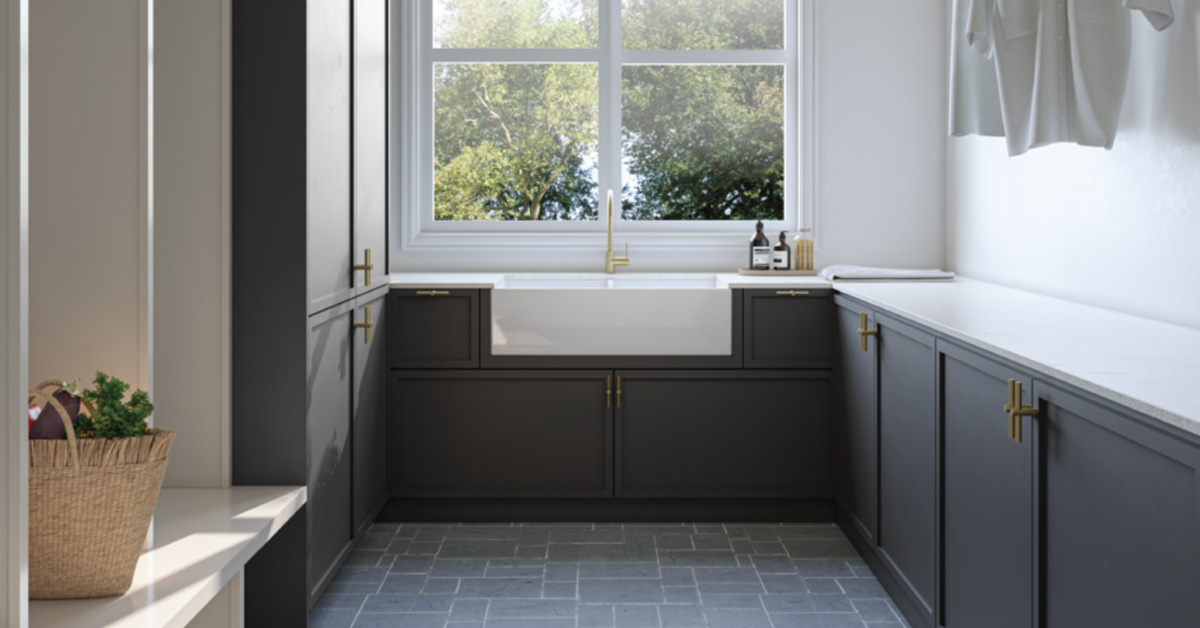We all wish our house would remain picture perfect and orderly. Clean and organised. A calm place to retreat to at the end of the day.
But in any busy household, this is often an unrealistic task.
Our houses are homes – spaces where people live, and with that, comes the unavoidable mess and clutter being brought inside each day.
Originating in rural areas in Europe and the United States, a mudroom is a transition space for your home where backpacks, dirty shoes and other “outdoor” items can be stored before entering the rest of the house.
They can also serve as storage spaces for other items, like jackets, sports equipment and the dog lead.
Essentially, this multipurpose space ensures that as little of the outside world comes into your sanctuary as possible.
In recent years, this concept has been embraced by Australians, where our great weather and active outdoor lifestyles mean that the dirt and chaos of the world is often a small step from our home sanctuary.
In Australia, the mudroom is often incorporated into the laundry room as families seek to increase the functionality of their space.
The accessibility to the back garden, sink and typically tiled floors makes this an ideal location to make this typically unused space the ideal place for the messy parts of family life.
The key to a great mudroom is finding the balance between a welcoming space that looks good while also offering the functionality your home needs.
Planning makes perfect
Your mudroom should be personalised to the area you have available, as well as the needs of your home.
For some, this space is simply an entry point which requires storage for shoes, jackets and the dog lead. For those who have more space to work with, it could also be a storage space for all of the outdoor items – large cricket bags, beach toys, seasonal clothing and more.
Without careful planning, it would be easy to get caught in over or underestimating what will need to be stored in this new space.
Think about how you and your household will be using it, and then create a list of everything which will need to be stored to ensure the space is used to the best of its ability.
Functionality first
Like the bathroom or kitchen, it’s the secondary elements of a mudroom that will truly create a space that meets the needs of your household.
For many mudrooms, a chair or bench where family members can remove or put on their shoes can be an easy addition to ensure the room is actually used for its intended purpose.
With so much of the outside world passing through your mudroom, it also makes sense to incorporate a sink into the space. From washing muddy shoes to rinsing dirty clothes before putting them straight into the washing machine, this can be one of the most practical additions to a mudroom.
There are plenty of opportunities to match your existing household ceramic or Arqstone features or install a stainless steel option, ready to handle any mess or wash dirty hands.
As a space where muddy boots, sandy clothes and dog toys will be a frequent visitor, opt for an easy to clean surface and dark fabrics.
A place for everything, and everything in its place
The last thing you want is a space that works against how your household naturally flows.
Planning your mudroom space layout is a critical first step.
There are many simple, sensible decisions that can act as anchors within your design. Placing everyday shoes near your bench or adding a place to easily hang an umbrella next to the door for easy access not only make practical sense, but provide some initial decisions within your planning process.
Creating zones and storing items with the same use (or user) together can help you keep this high traffic area organised and used to the best of its ability.
For many families, giving each person or pet a specific place is a great way to encourage even the littlest member of the house to place their “stuff” where it belongs.
These spaces really lend themselves to creative storage options, like flexible shelving, baskets and hanging space that can be customised to each member of the family and adjusted as your family grows and changes.
Likewise, a beach cupboard or a sports equipment zone makes for easy packing and saves you from the inevitable “has anyone seen…” conversation as you walk out of the door.
A part of the house
The mudroom is part of your home so it’s important to try and incorporate other style elements from other rooms into this space.
An easy way to do this is to incorporate tiles or tapware that match the look of your kitchen or bathrooms.
Incorporating similar paint colours and flooring can elevate your mudroom, you can also bring in similar style elements like baskets or cushions to create a more welcoming feel to the space.
The next steps
While many Australian homes already feature an entry transition space, adding a mudroom is an opportunity to create a practical area that is well thought out and matches your unique needs and style.
For many households, a mudroom has become a key part of how their home functions.
The options are endless, so let your imagination run wild and find the options that will work best, and look best, for you.
